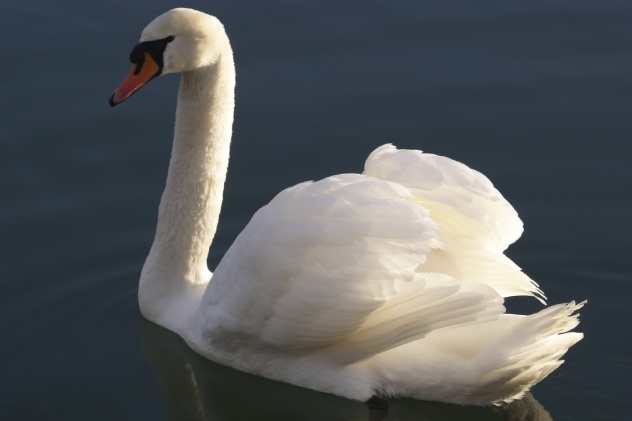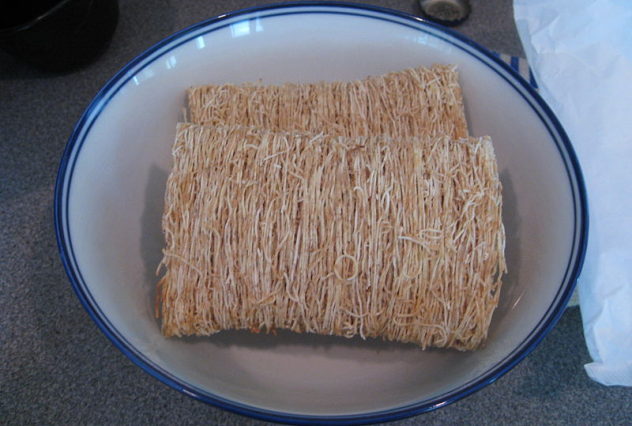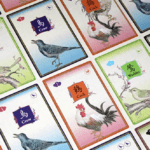 Weird Stuff
Weird Stuff  Weird Stuff
Weird Stuff  Our World
Our World 10 Ways Your Christmas Tree Is More Lit Than You Think
 Movies and TV
Movies and TV The 10 Coolest Stars to Set Sail on The Love Boat
 History
History 10 Things You Didn’t Know About the American National Anthem
 Technology
Technology Top 10 Everyday Tech Buzzwords That Hide a Darker Past
 Humans
Humans 10 Everyday Human Behaviors That Are Actually Survival Instincts
 Animals
Animals 10 Animals That Humiliated and Harmed Historical Leaders
 History
History 10 Most Influential Protests in Modern History
 Creepy
Creepy 10 More Representations of Death from Myth, Legend, and Folktale
 Technology
Technology 10 Scientific Breakthroughs of 2025 That’ll Change Everything
 Weird Stuff
Weird Stuff Ten Bizarre Facts About The Doge Meme
 Our World
Our World 10 Ways Your Christmas Tree Is More Lit Than You Think
 Movies and TV
Movies and TV The 10 Coolest Stars to Set Sail on The Love Boat
Who's Behind Listverse?

Jamie Frater
Head Editor
Jamie founded Listverse due to an insatiable desire to share fascinating, obscure, and bizarre facts. He has been a guest speaker on numerous national radio and television stations and is a five time published author.
More About Us History
History 10 Things You Didn’t Know About the American National Anthem
 Technology
Technology Top 10 Everyday Tech Buzzwords That Hide a Darker Past
 Humans
Humans 10 Everyday Human Behaviors That Are Actually Survival Instincts
 Animals
Animals 10 Animals That Humiliated and Harmed Historical Leaders
 History
History 10 Most Influential Protests in Modern History
 Creepy
Creepy 10 More Representations of Death from Myth, Legend, and Folktale
 Technology
Technology 10 Scientific Breakthroughs of 2025 That’ll Change Everything
10 Bizarre Historical Court Cases That Were Actually Important
The evolution of the justice system can be a strange thing to behold. For every important aspect of the law that is now a cornerstone of the judicial system, there was once a first. One seemingly unimportant court case came along, set a new precedent, and changed the law forever. And a lot of these landmark cases are downright bizarre.
10 Keeble v. Hickeringill
Two Angry Neighbors

Back in the early 18th century, Samuel Keeble and Edmund Hickeringill were neighbors who got into a heated conflict over some ducks. Keeble owned a property known as Minott’s Meadow. It contained a pond that had been outfitted with a “duck trap” to capture wild fowl. The trap contained tame ducks that acted as lures and nets to capture the wild ducks, which Keeble then sold for a profit. His neighbor, Hickeringill, while on his own property, discharged firearms that regularly scared away Keeble’s ducks.
At first, it might sound like a classic case of bickering neighbors that you might expect to see in Grumpy Old Men, but it set an important precedent for English property law. Keeble took Hickeringill to court seeking damages for depriving him of profit. Hickeringill pleaded not guilty, claiming that he was acting lawfully on his own property. However, the main issue decided here was whether Keeble had property rights to the wild animals on his land or not. Eventually, the courts sided with Keeble since it was ruled that Hickeringill purposefully deprived him of a lawful profit, and Keeble was awarded £20 in damages.
9 Ghen v. Rich
Who Owned The Dead Whale?

The 1881 case of Ghen v. Rich in Massachusetts was another landmark case that helped define property law, this time in the US, by settling a dispute over a dead finback whale. Ghen was a whaler who hunted and killed the aforementioned whale using his signature bomb-lance. Unable to recover the animal at the time, Ghen allowed it to wash ashore, knowing that whoever found it would have been able to identify him as the rightful owner of the whale and notify him in exchange for a finder’s fee.
At least, that was the custom of the whaling industry in Cape Cod at the time. However, when the whale washed up, it was found by a man named Ellis, who promptly claimed ownership and quickly sold it off to another man named Rich. He turned the whale into various products and made a profit but was sued by Ghen for damages.
By not notifying Ghen, Ellis went against established customs, but did he act against the law? The court ruled in Ghen’s favor and granted him trover on the dead whale, and it also decided that such customs practiced within an industry can be used to establish ownership of property. In modern times, the case is frequently brought up to illustrate the legal difference between “possession” and “ownership” and how tricky it can be to distinguish between the two.
8 Armory v. Delamirie
Finders Keepers

Another great example that created a correlation between “possession” and “ownership” was the English court case of Armory v. Delamirie from 1722. Armory was the young son of a chimney sweep who found a ring with precious stones in it. Wanting to know the value of the ring, he took it to a jeweler named Delamirie. Specifically, he was Paul de Lamerie, one of the finest silversmiths of Victorian London, but the court reporter misspelled his name.
An apprentice of de Lamerie examined the ring and removed the precious stones, pretending to weigh them. He then offered Armory three halfpence for the ring. When the boy refused, he tried to return the ring without the stones. The apprentice kept the gems, so Armory sued him. It was up to the court to decide if either of them had any property rights on the gems.
Everyone agreed that neither Armory nor de Lamerie were the rightful owner. This case was not about establishing who the rightful owner was. The court agreed that both parties had certain possession rights to the gems—Armory because he found them and the jeweler because they were in his possession. The question was who had the better right. The court ruled that, as the finder, Armory had possession rights to the ring better than everyone except the rightful owner. Not only that, but since the jeweler didn’t bring the stones, he had to pay the maximum possible value for gems of that kind.
7 The King v. Young
The Case Of Swans

Here’s a bit of trivia about England that people often like to bring up: The queen owns all the swans. There is some truth to that, but the queen can only lay claim on mute swans that haven’t been marked yet and are found in open waters. And she doesn’t actually go swan hunting; it’s just a quirky law from medieval times.
It was different a few centuries ago. Swan was considered a delicacy in England, and in 1592, Dame Joan Young went to court against Queen Elizabeth I to establish ownership of the hundreds of swans in Abbotsbury in Dorset. The swannery had been in the care of abbots since time immemorial. In England, “time immemorial” is defined as before the reign of Richard I in 1189.
However, in 1536, Henry VIII began the Dissolution of the Monasteries, and the abbots lost the rights to the abbey and the swans. Henry then sold the estate to Giles Strangways, who passed it on to his grandson, also named Giles. This Giles was the first husband of the aforementioned Dame Joan Young, who inherited his estate.
Queen Elizabeth wanted the swans returned under ownership of the monarchy, i.e., her. She was represented by Solicitor General Sir Edward Coke. Shockingly, the queen won after it was ruled that ownership of wild animals cannot be transferred. From then on, all unmarked wild white swans in open water were decreed royal fowl that could be “seized to the King’s use by his prerogative.”
6 Donoghue v. Stevenson
The Paisley Snail
Donoghue v. Stevenson in 1932 was a landmark case in Scottish and English law that popularized the modern judicial concept of negligence by defining situations where one person has a duty of care to another person.
In this case, David Stevenson was a ginger beer manufacturer in Paisley, near Glasgow. May Donoghue was a woman who met a friend at a cafe and ordered a Scotsman ice cream float. After enjoying her treat, Ms. Donoghue was stunned to find a decomposing snail in the bottle of ginger beer that she just drank. She subsequently checked into hospital, where she was diagnosed with gastroenteritis and shock after complaining of stomach pains. Afterward, she sued Stevenson for negligence.
This happened in 1928, but it took until 1932 for the matter to be resolved, mostly because Ms. Donoghue couldn’t find anyone to take her as a client. This case didn’t establish the concept of negligence, as is usually believed. It already existed, but in limited situations, when there was a contract between parties or when the manufacturer was creating a dangerous or illegal product. Since neither applied here, most solicitors didn’t think Ms. Donoghue had a case. She finally found a solicitor in 1931 who had already accepted (and lost) two similar cases. This time, however, he won by arguing that Ms. Donoghue could not examine the ginger beer beforehand due to the bottle’s opaqueness. She was awarded £200 in damages.
5 Kellogg v. National Biscuit
The Shredded Wheat Affair

In 1893, inventor Henry Perky created what he called “little whole wheat mattresses,” known to everyone else as shredded wheat. After receiving a patent for his creation, Perky initially tried to sell the machine that made shredded wheat. While people weren’t really interested in the machine, they did like Perky’s new breakfast food, so the Shredded Wheat Company was born.
Perky died in 1906, and his patents expired in 1912, at which point the Kellogg Company started making their own shredded wheat. After an initial lawsuit, Kellogg stopped making the food until 1927. Around this time, the Shredded Wheat Company was bought by the National Biscuit Company (now Nabisco), which sued Kellogg again over their shredded wheat. What followed was one of the most influential court cases in trademark law.
Nabisco complained in the suit about Kellogg using the term “shredded wheat,” their cereal resembling Nabisco’s product, and the similar designs between their cereal boxes. Nabisco accused Kellogg both of trademark infringement and unfair competition.
The case was settled in 1938 in a 7–2 Supreme Court decision, with the court ruling in favor of Kellogg. Since Nabisco’s patents expired in 1912, the process for making shredded wheat was open to the public, and the name was generic and descriptive enough that it could not be trademarked. The pillow-shaped form of the cereal was also ruled functional and practical. Therefore, not being allowed to copy it would prevent rivals from being able to create a competitive product.
4 The King v. Penn And Mead
Bushel’s Case

This English court case from 1670 featured a vindictive judge angered by his jury and led to the ruling that juries could not be punished simply for the verdict they reach. It also determined that the Court of Common Pleas (or the Common Bench) could issue writs of habeas corpus or reports of illegal imprisonment.
The case was initially brought against two preaching Quakers charged with unlawful assembly—William Mead and William Penn, future founder of Pennsylvania. In accordance with the Conventicle Act of 1664, groups larger than five were not allowed to form religious assemblies outside the auspices of the Church of England.
After the evidence had been reviewed, the jury concluded that the two men were guilty of “speaking in Grace-church street,” but not of unlawful assembly. The presiding judge, Thomas Howell, was not happy with the verdict and sent the jury back to reconsider the evidence. A half hour later, they returned with another exculpatory verdict, which infuriated Justice Howell. He then instructed that the jury members be locked up “without meat, drink, fire, and tobacco” until they provide a verdict that the court will accept. The next morning, the jury had the same verdict. They were locked up for another day and eventually returned with another “not guilty” verdict.
Furious at the jury’s actions, the judge fined each member 40 marks and imprisoned them until they paid. Jury foreman Edward Bushel appealed the decision, and it was ruled that the jury was unlawfully detained.
3 Hulle v. Orynge
The Case Of Thorns

In common law, tort is a civil wrong where one person can hold someone else liable after being harmed or suffering a loss and receive damages. The case of Hulle v. Orynge from 1466 is one of the oldest tort law cases in English history and is still studied in introductory tort classes.
An important aspect of torts is that they don’t necessarily have to be based on crimes. Even if the defendant acted out of negligence (and not criminal negligence), they are still liable as long as the plaintiff can prove their actions were the cause of the loss. This case, commonly referred to as the Case of Thorns, perfectly illustrates this.
Hulle and Orynge were neighbors, and one day, the defendant was cutting thorns from a hedge, which landed on the plaintiff’s land. The defendant went onto the plaintiff’s property to retrieve the thorns but, in doing so, damaged his crops. He was sued for trespassing but claimed that he was justified in doing so in order to retrieve his thorns.
Although the court held that the defendant’s act was lawful, it did not exempt him from responsibility, and he had to pay. The damages were minor, the settlement was small, and under any other circumstances, this seemingly trivial case would quickly be forgotten. However, the Case of Thorns became highly influential and has been cited in other trials as early as 1681, in the case of Bessey v. Olliot and Lambert.
2 United States v. Carolene Products Company
Milk Revolutionizes Equal Protection

This case, handled by the US Supreme Court in 1938, would not be particularly notable if not for one small footnote that has been described as the “most famous footnote in constitutional law.”
The case itself was pretty straightforward. In 1923, Congress passed the Filled Milk Act, which prohibited interstate commerce of filled milk, as it was ruled a danger to public health. Filled milk was skimmed milk that was combined with oily products other than milk fat so it would resemble the texture of cream. The Carolene Products Company had a product called “milnut” that was made using coconut oil and was shipped over interstate lines. The issue was whether the Filled Milk Act violated the “due process” clause of the Fifth Amendment. The Supreme Court ruled in favor of the government, reasoning that evidence showed milnut could be a health hazard.
The case file contained the infamous Footnote Four, written by Justice Harlan Stone. It argued that, while the Court used minimal scrutiny under the rational basis review in this particular case, heightened levels of scrutiny could be applied in other types of cases. This new level, now known as strict scrutiny, became a huge part of equal protection jurisprudence. The first case where it was brought up is still its most notable—Korematsu v. United States in 1944. Fred Korematsu challenged the constitutionality of Executive Order 9066, which placed Japanese Americans in internment camps during World War II.
1 Pierson v. Post
The Case Of The Dead Fox

In 1805, New York hunter Lodowick Post was chasing a fox through an empty lot of land. Another hunter, Jesse Pierson, knew that Post was in pursuit of the fox but shot it anyway and took it away. Post then sued Pierson for trespassing on the case, arguing that his pursuit of the wild animal gave him possession over it.
The trial court sided with Post, but Pierson appealed, and the matter was taken to the New York Supreme Court, where the decision was reversed. Simply giving chase did not give someone possession rights to a wild animal; they either needed to be killed or captured. Future US Vice President Daniel Tompkins wrote the majority opinion, where he cited ancient precedents going all the way back to sixth-century Byzantine Emperor Justinian I.
That was not the end of the matter, though. Supreme Court Justice Henry Brockholst Livingston offered dissent, but he did so mostly because he didn’t like foxes. He argued that the death of a fox, a “wild and noxious beast,” is a matter of public interest and that public policy should offer the greatest possible encouragement for destruction of the animal. Therefore, hunters should be granted possession in pursuit of foxes if it’s reasonably certain that the pursuit would eventually lead to the animal’s capture. In the end, Pierson didn’t have to pay any damages, and the case became highly influential in property law.
Radu is a history/science buff with an interest in all things bizarre and obscure. Say hi on Twitter or read more odd tales on his website.








